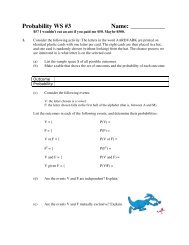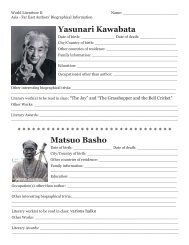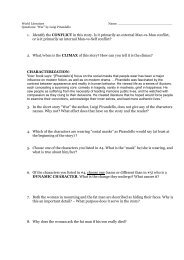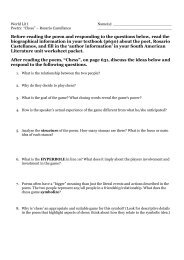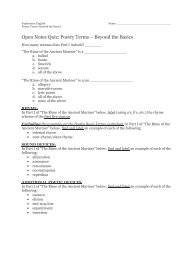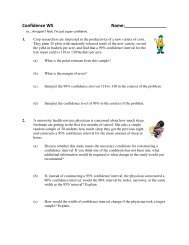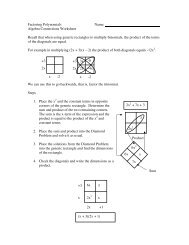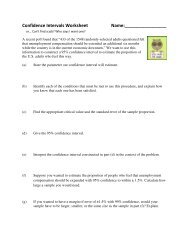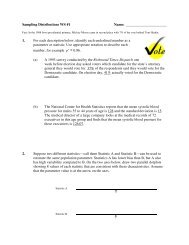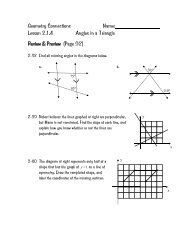Population Means Tests WS Name
Population Means Tests WS Name
Population Means Tests WS Name
You also want an ePaper? Increase the reach of your titles
YUMPU automatically turns print PDFs into web optimized ePapers that Google loves.
<strong>Population</strong> <strong>Means</strong> <strong>Tests</strong> <strong>WS</strong><br />
Mean? I'm a math teacher. What did you expect?<br />
<strong>Name</strong> ___________________<br />
1. The Environmental Protection Agency has determined that safe<br />
drinking water should contain no more than 1.3 mg/liter of<br />
copper. You are testing water from a new source, and take 30<br />
water samples. The mean copper content in your samples is<br />
1.36 mg/l and the standard deviation is 0.18 mg/l. There do not<br />
appear to be any outliers in your data.<br />
(a) Do these samples provide convincing evidence at the α =<br />
0.05 level that the water from this source contains unsafe<br />
levels of copper? Justify your answer.<br />
(b)<br />
How would your conclusion change if your sample mean had been 1.355 mg/l?<br />
What point does this make about statistical significance?
2. A consumer advocacy group tests the mean vitamin C<br />
content of 50 different brands of bottled juices using, in<br />
each case, a t-test of significance in which the null<br />
hypothesis is the mean amount of vitamin C that is on the<br />
nutrition facts label for that brand of juice. They find that<br />
two of the 50 juice brands have statistically significantly<br />
lower Vitamin C than claimed at the α = 0.05 level.<br />
(a)<br />
In the context of this study, what does “statistically<br />
significant” mean?<br />
(b)<br />
Is this an important discovery? Explain.<br />
3. Tai Chi is often recommended as a way in improve balance and<br />
flexibility in the elderly. Below are before-and-after flexibility<br />
ratings (on a 1 to 10 scale, 10 being most flexible) for 8 men in<br />
their 80’s who took Tai Chi lessons for six months.<br />
Subject A B C D E F G H<br />
Flexibility rating after Tai Chi 2 4 3 3 3 4 5 10<br />
Flexibility rating before Tai Chi 1 2 1 2 1 4 2 6<br />
Do these paired data adequately meet the Normality condition for a t-procedure? Justify<br />
your answer.



